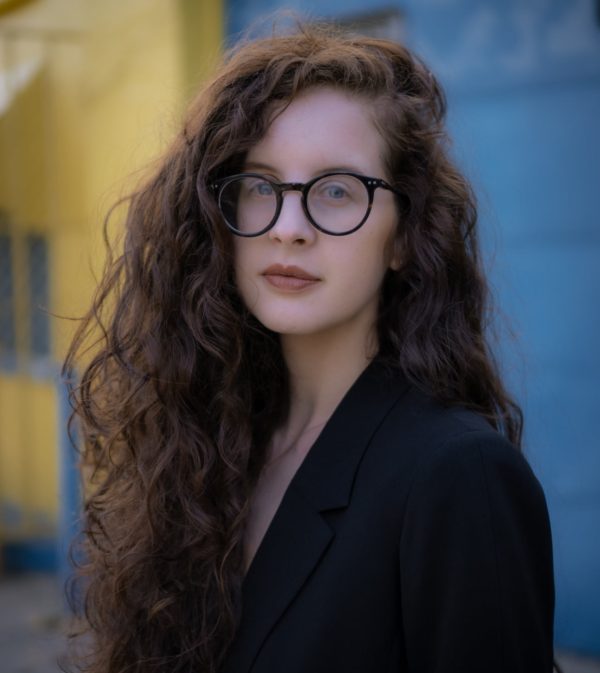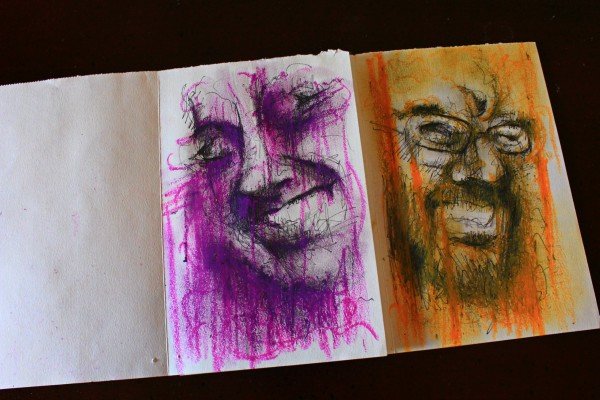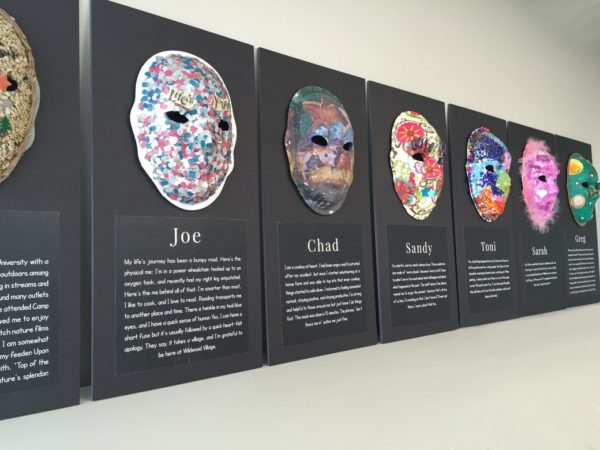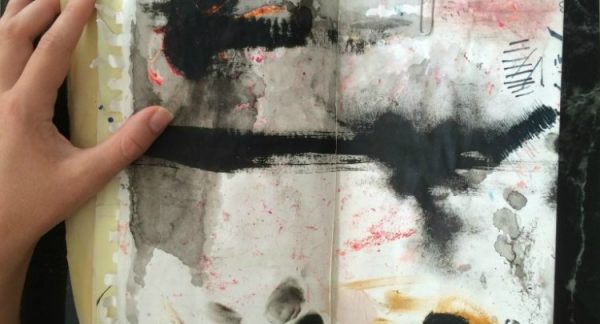Art Therapy for Women – Limelight Interview

Art therapy for women (and men) has always been a part of Sanford programming. And according to Art Therapist Jess Kimmel, the first thing she says to a group is, “show me”. Of course, when she asks someone to “show” her something, she’s actually asking them to show themselves.
Sanford embraces art therapy as a viable and effective framework for treatment. We encourage alternative methods of self-exploration and self-care with confidence. Because of this, we have created a space for those individuals in our care, with a preference for non-verbal counseling or visual language. And when possible, we also utilize the vibrant art community in Grand Rapids as a catalyst for therapeutic discussion. With museums, Artprize, Meijer Gardens and Sculpture Park, and Sanford’s art collection as inspiration.
Art Therapy for Women
The subject of our Limelight Interview, Jess Kimmel, MSAT, LLPC, works at Sanford House at Cherry Street for Women. We sat down with Jess to talk about the women’s residential house and the impact of COVID-19 on all aspects of her job. Not the least of which, is organizing art projects with the women in her charge safely distanced, their supplies divided into individual bags.
Art therapy has its unique challenges during COVID-19. We don’t convene in one big space to work. No sharing of materials. And some of the clinical and community aspects are lost. But we start together, then work independently and come together again to share and discuss.
Jess Kimmel, MSAT, LLPC

Jess Kimmel
Art Therapy, Women’s Addiction Treatment and COVID-19 – Limelight Interview
1. Let’s start with your thoughts on the impact of the coronavirus on your “art”.
There’s a lot to say. First, relapse and the fear of relapse. Isolation, boredom, lack of purpose, vulnerability are all things our clients have dealt with in their home environments. Also, not knowing what to do with their time and the ease of liquor deliveries. Telehealth has been helpful, but with all the stressors, learning something brand new is tough. And when folks are hurting, its an “out” to slip a bit, to take advantage of the situation
2. How are you preparing the women for returning to “real life”?
COVID-19 comes up in groups. And we make sure to help them understand that recognizing things are different is important. A recovery plan is about connection and accountability. So we are creating COVID specific aftercare plans. The women are becoming familiar with telehealth during 12-step groups in the evening. And the positive is that we can help them establish home groups even if they live away from Grand Rapids.
3. What is important to include in the aftercare plans?
Many residential clients step down to Sanford telehealth options. Intensive outpatient or outpatient. And we help the women find alternative living arrangements if necessary. We make sure they are comfortable with telehealth platforms and plan what is realistic in the current environment.

Practicing what she preaches – art therapy from Jess’s journal …
4. Talk about Art Therapy for Women.
We have one group a week for art therapy. It has to do with a solution-focused plan of action. Every woman has an individualized plan. We seek understanding of their past, and determine recovery needs. Everything is more complicated in 2020 – a bit disconnected. The challenges to art therapy are due to required distancing. We cannot share, so everyone gets their own bag of materials. And there is not one big space to make art in currently. Some of the clinical and community aspects are lost. But we start together, then work independently and come together again to share and discuss.
5. What is your treatment philosophy?
Internal motivation, stage of readiness, and I use supports to walk alongside the women, not push. I feel this has a huge impact on recovery.
6. Why did you become a therapist?
I was in art school – and miserable. I took some psychology classes and loved them. And when I found art therapy for eating disorders and substance use disorders, I was inspired.
7. What is the key to success in recovery?
Do not have just one support or coping skill. Layering of different coping skills is important. How you deal with triggers in the moment, and plenty of practice while in residential therapy.
8. And the pitfalls?
Missing the relapse warnings. The signs can be sneaky – canceled appointments, distancing from a sponsor, etc. And if a relapse occurs, come forward and be honest about it. Say what you “shouldn’t be saying” in treatment and recovery, even if it’s something like I’m not getting anything out of this group/12-step meeting.

Masks – from an excursion to ArtPrize, Grand Rapids, MI
9. What is the fun part of art therapy for women?
I love hearing people’s stories – however they express them. We work with such dynamic, interesting women. I also love learning more about the human experience. I’ve never had a client who doesn’t have a story worth hearing …
10. The Challenges?
The flexibility that COVID-19 necessitates. COVID has impacted every aspect of the job – huge. And residential is impacted more than outpatient. In fact outpatient has some real advantages with telehealth. Folks can join from out of Grand Rapids and out of state. And far flung families can also participate in family therapy via telehealth in residential. We certainly use telehealth for many things we did in-person before the pandemic.
11. Do you read anything other than work related material?
Yes! I like criminal fiction – fluffy stuff that is not related to real life. Escape.
12. What is your favorite journey?
The journey towards self-compassion. The understanding of one’s self. It’s easy to get bogged down, I try to be gentle with myself. And I want to change and grow. I like to ask the question, “I wonder what it would be like if …?”
13. What makes Sanford unique?
I hear from clients all the time that Sanford feels “different than other treatment facilities”. Here everyone, staff and clients alike, are considered and respected – emotionally and physically.
14. What is your most marked characteristic?
My calming, soothing tone of voice. I’m told I have the perfect voice for guided meditation.
15. What words or phrases do you use/overuse?
Does that make sense? Do you follow me? I like to get a temperature check of the room, personalize, make sure things are resonating.
That makes sense. Thanks Jess. SH



